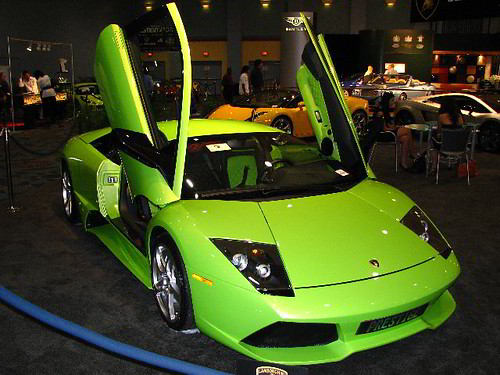|
|
|---|
Tuesday, February 23, 2010
Lithium and REE: The world's next resource conflict TNR.v, CZX.v, LMR.V, RM.v, WLC.v, LI.v, SQM, FMC, ROC, AVL.v, RES.v, QUC.v, HEV, AONE, NSANY, BYDD
Posted by andre at 2:49 AMChina controls more then 97% of the market now.
By 2014 China will consume everything that will be produced in REE space.
All other REE metrics like 36 kg of REE in every Prius and 300kg of Rare Earth magnets per 1 mW of Wind Tubines"
The world's next resource conflict
Published: Feb. 22, 2010 at 4:05 PM
By STEFAN NICOLA, UPI Europe Correspondent
BERLIN, Feb. 22 (UPI) -- The next resource conflict could be about minerals and rare earth elements needed to fuel the green economy, as China, which supplies most of the minerals, is considering limiting exports.
There is great hope for a green boom to transform the CO2-heavy world economy into one that is less dependent on fossil fuels and more sustainable. Experts envision solar panels and wind turbines to produce clean power and heat and electric cars to cruise tomorrow's roads.
The problem with these technologies is that they rely on minerals and rare earth elements, or REEs, which are produced by politically unpredictable countries, including China.
The market for REEs -- needed for hybrid cars, wind turbines, solar panels and defense industry products such as missiles and radar systems -- has tripled in size over the past decade. Experts say the market will further grow, from 125,000 tons produced per year today to 200,000 tons in 2014.
When it comes to REEs, China is the new kid on the block. In charge of more than half the global reservoirs, China supplies around 95 percent of the world's REEs.
This worries experts: A single mine in Mongolia accounts for 80 percent of China's production, so an earthquake or a flood in that region could severely disrupt global supplies.
And don't forget a political earthquake. Recently, Beijing indicated it plans to reduce exports of its minerals in a bid to save supplies for domestic use.
China has a quickly growing green technology industry and its solar panels and wind turbines are already competing with products from Europe and the United States, so they increasingly need the REEs themselves.
The situation is similarly dire for lithium, which forms the basis of the batteries intended to power the electric car boom. According to the Hyundai Research Institute, 80 percent of the world's lithium reserves are buried under just three countries.
Gal Luft, the executive director of Washington's Institute for the Analysis of Global Security, said politicians in the United States and Europe need to diversify mineral imports and make sure that lithium and REEs are recycled and stockpiled.
"If ignored, this issue could lead to significant energy security problems down the road," he told United Press International in a telephone interview Monday.
Most of the lithium is mined in Chile, Argentina and China and sold by only a handful of companies. Bolivia, led by the Anti-American President Evo Morales, recently discovered that one of its decommissioned salt mines harbored giant reserves of lithium and is using this find to attract huge foreign investments. South Korea has already bought into the mine, and China, France and Japan are trying to grab a piece of the pie.
The United States used to produce its own lithium and REEs, but most of the domestic mines have closed because mines in Latin America and China are able to operate much cheaper.
Luft said Washington needed to provide incentives for the mines to start digging again.
"When you factor in energy security, it's clear that you have to accept a premium to become more resource independent," he said. When it comes to REEs, it's key to increase output of the right kind, Luft said.
A boom element is neodymium, of which between 1 ton and 2 tons are included in a large-size wind turbine.
The global production stands at 17,000 tons per year, and many other industries also use neodymium -- so it's clear that much more of the element is needed in the future.
"It's a crucial and urgent issue, and politicians need to act quickly," Luft said. "Because it will take 10 years with for project to get the material out of the ground and into the market."
















0 comments:
Post a Comment